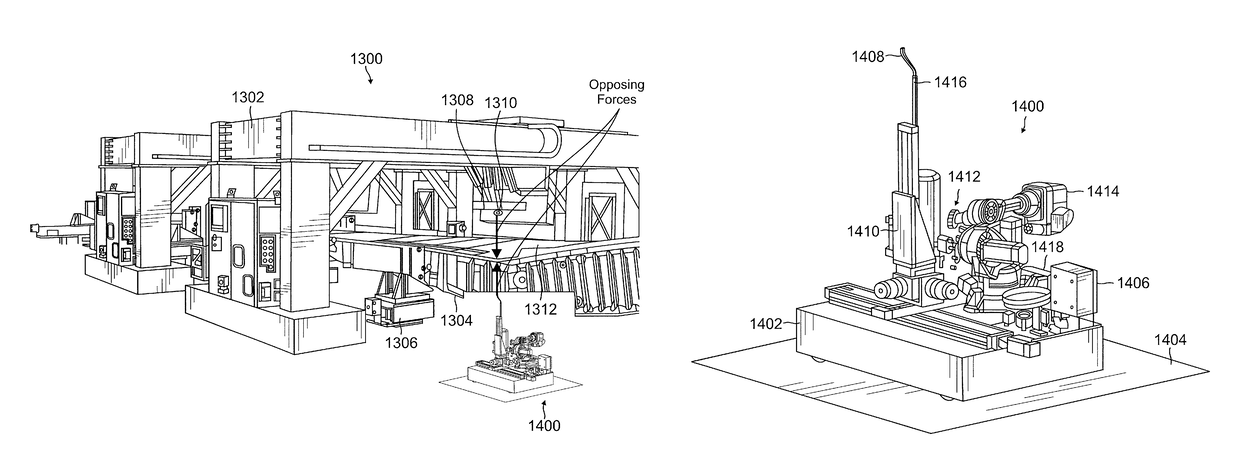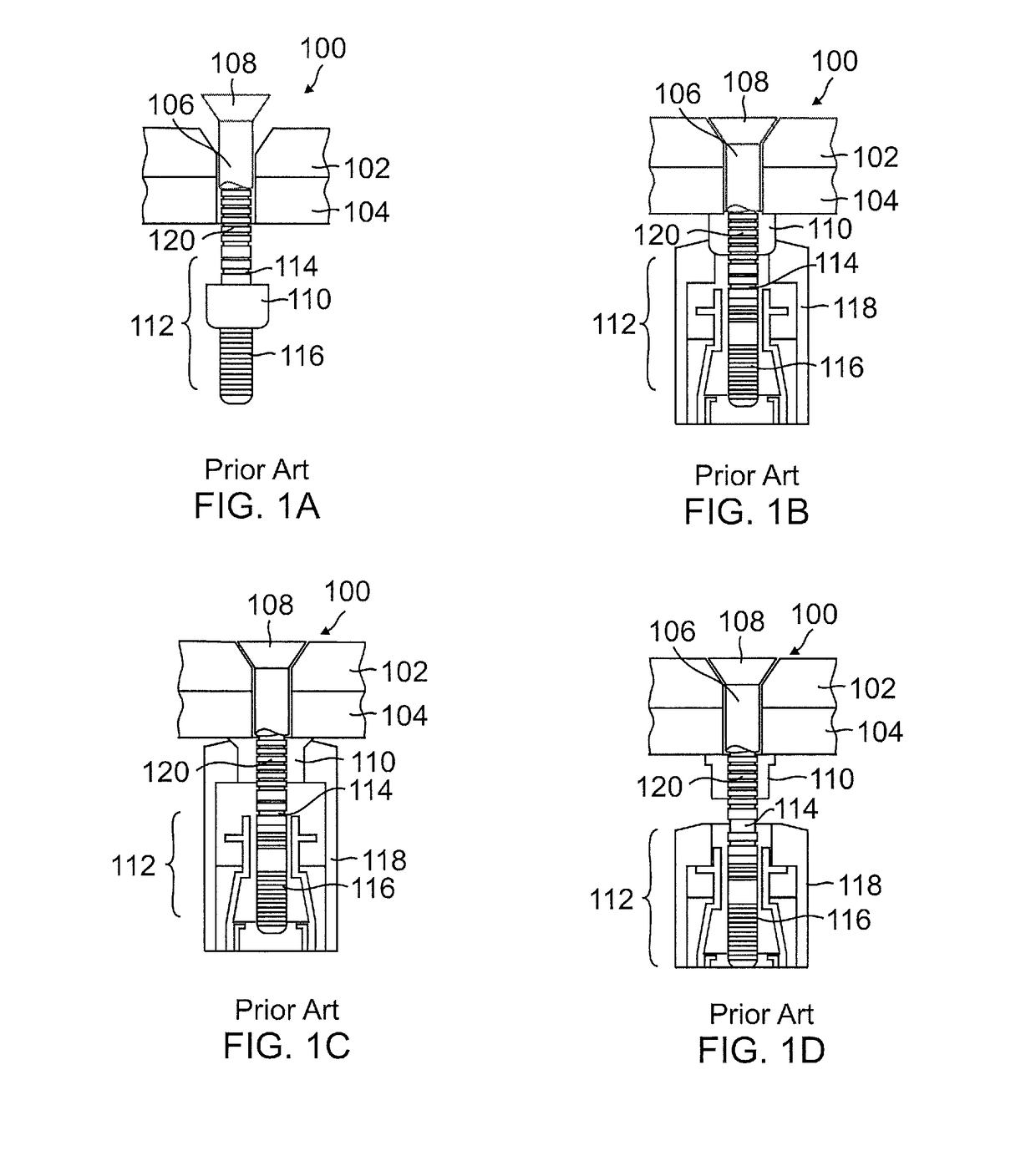Systems and methods for assembling aircraft wing skins
a technology for aircraft wings and wing skins, which is applied in the direction of rivets, wings, securing devices, etc., can solve the problems of increasing process flow time, difficult to maintain the drill bit normal to the surface of the panel, and substantially manual processes involved in the attachment of the panel to the underlying structure with fasteners
- Summary
- Abstract
- Description
- Claims
- Application Information
AI Technical Summary
Benefits of technology
Problems solved by technology
Method used
Image
Examples
Embodiment Construction
[0026]In accordance with embodiments of the present disclosure, automated systems and methods are provided, including a robotic mobile automated collar installation system (MACIS), for assembling upper skin panels of aircraft wings to underlying wing support structures with lockbolt-type fasteners.
[0027]FIGS. 1A-1D are partial cross-sectional views of a first type of a typical lockbolt fastener 100 currently used to assemble an aircraft skin panel 102 to an underlying wing structure 104 such as a wing rib, spar, shear tie, frame or the like, showing some sequential steps involved in the assembly. In the particular example embodiment of FIGS. 1A-1D, the fastener 100 comprises a HUCK type lockbolt fastener, but as discussed below, other types of lockbolt fasteners are also available and may be used. As can be seen in these figures, the fastener 100 comprises an elongated “pin” or shaft 106, a head 108 disposed concentrically at an upper end of the shaft 106, and a locking nut or “coll...
PUM
 Login to View More
Login to View More Abstract
Description
Claims
Application Information
 Login to View More
Login to View More - R&D
- Intellectual Property
- Life Sciences
- Materials
- Tech Scout
- Unparalleled Data Quality
- Higher Quality Content
- 60% Fewer Hallucinations
Browse by: Latest US Patents, China's latest patents, Technical Efficacy Thesaurus, Application Domain, Technology Topic, Popular Technical Reports.
© 2025 PatSnap. All rights reserved.Legal|Privacy policy|Modern Slavery Act Transparency Statement|Sitemap|About US| Contact US: help@patsnap.com



